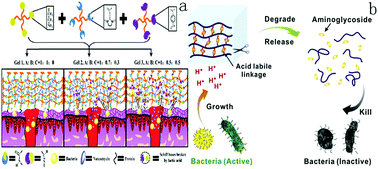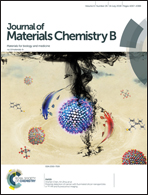Recent developments in smart antibacterial surfaces to inhibit biofilm formation and bacterial infections
Abstract
Since their development over 70 years, antibiotics are still the most effective strategy to treat bacterial biofilms and infections. However, the overuse of antibiotics in human healthcare and industrial applications has resulted in the development of serious antibiotic-resistant bacteria. Therefore, alternative ways to prevent bacteria attachment and biofilm formation are urgently needed. Recently, mediated biofilm formation processes and smart antibacterial surfaces have emerged as promising strategies to prevent and treat bacterial infections. This review discusses the recent progress in biofilm interference and smart antibacterial surfaces. Smart antibacterial and anti-biofilm surfaces should be responsive to the bacterial infection environment, switchable between various antibacterial functions and have a special bio-inspired structure and function. The major topics discussed are: (i) smart anti-biofilm surfaces via the prevention of biofilm formation or promoting mature biofilm dissolution, (ii) smart materials for reversible killing and/or release of bacteria, (iii) smart surfaces responsive to bacterial infection microenvironments or external stimuli and (iv) bio-inspired surfaces with antifouling and bactericidal properties.

- This article is part of the themed collection: Recent Review Articles


 Please wait while we load your content...
Please wait while we load your content...